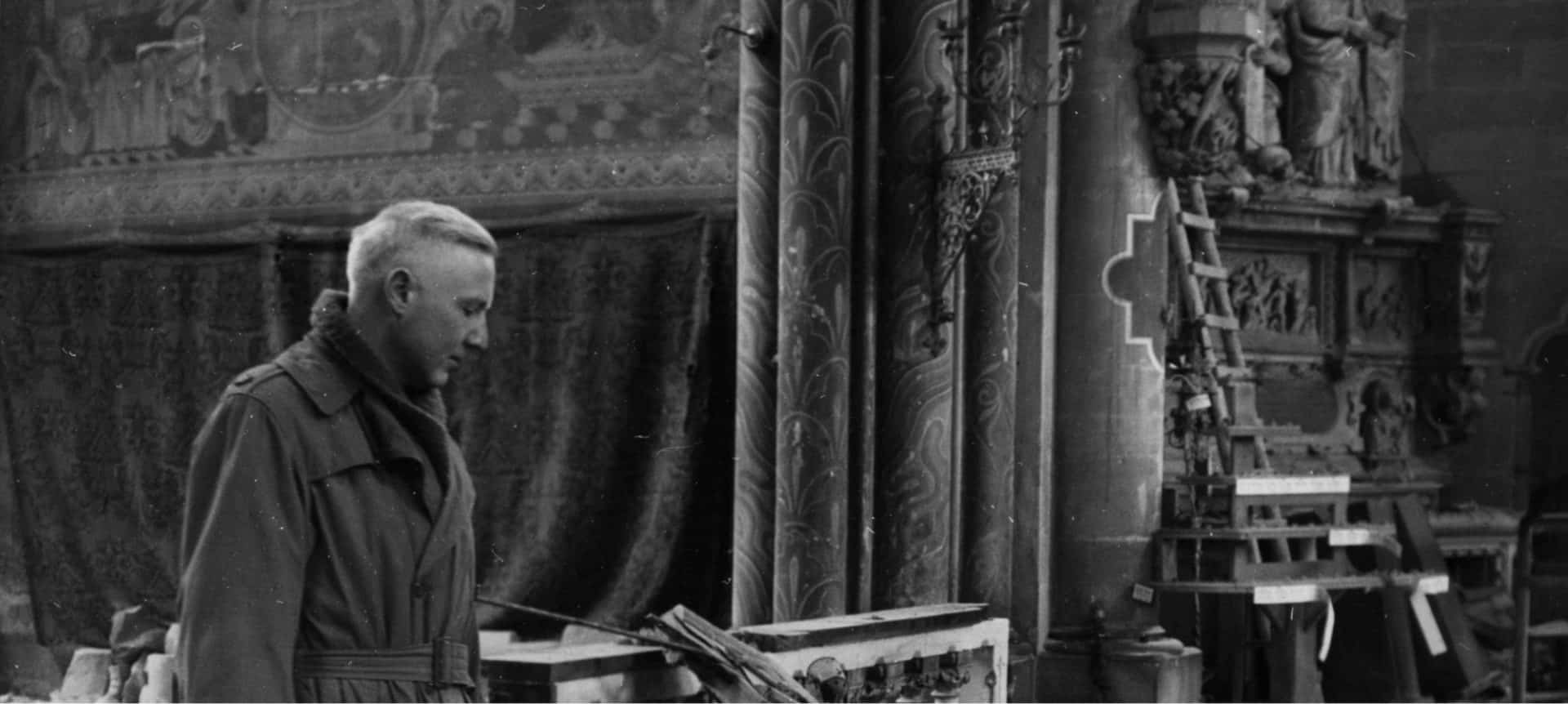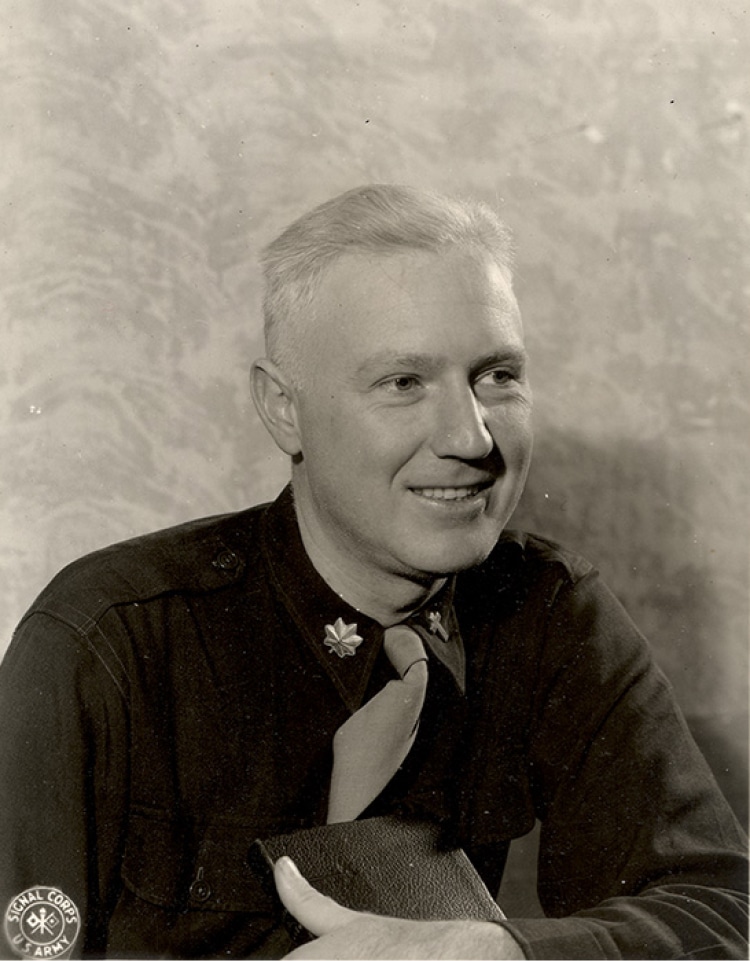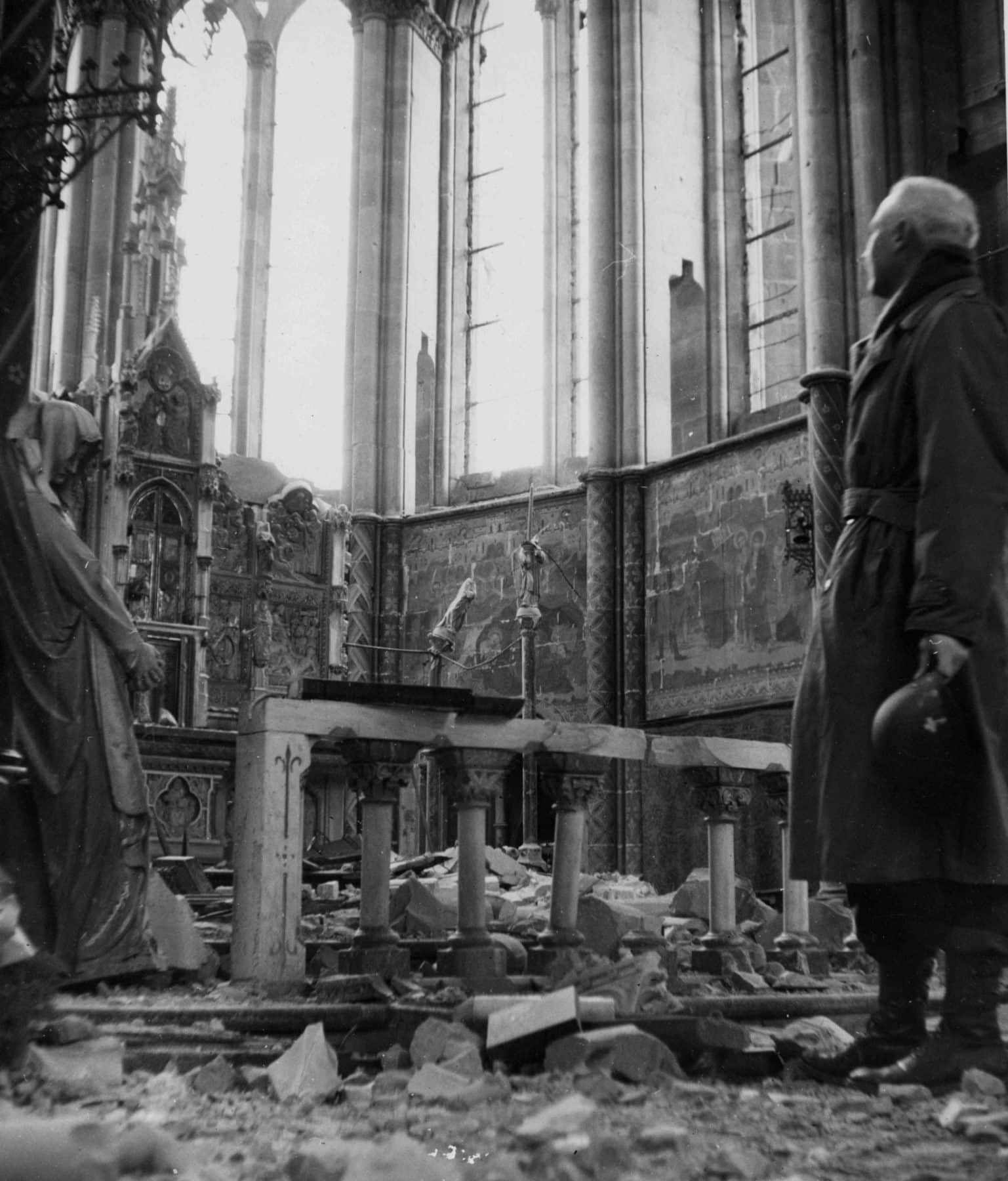
About
Fred McDonald
FRED’S STORY

US Army Episcopal chaplain Frederick McDonald served in the 12th Army Group from 1944-1945. Beginning his assignment in England and then on into Paris, and into Germany, McDonald witnessed the utter devastation of war. Reverend McDonald was born in Seattle, Washington on September 20, 1908. He was passionate about travel (in particular to Europe) and about church architecture, both of which would figure prominently in his later experiences.
McDonald attended the General Theological Seminary from 1931-1934 in New York City. His first parishes were in Rhode Island and then in his native Pacific Northwest, in Washington and Oregon. When the United States entered the war, the Army only had 137 chaplains on active duty. Nearly 9,000 men of faith would answer the call to serve in the Army Chaplain Corps during the war. In September 1942, McDonald reported to Chaplain School at Harvard University.
His first assignment was as chaplain at Fort Mason, the headquarters of the San Francisco Port of Embarkation. The Fort Mason Chapel was the site of 150 weddings in its first year. In June 1943, McDonald, wanting to be closer to action, was sent on two tours visiting and ministering to US ships in the Pacific. After returning to San Francisco from his second tour in July 1944, McDonald sailed for England with 89 other military chaplains assigned to the European theater feUS Army Episcopal chaplain Frederick McDonald served in the 12th Army Group from 1944-1945. Beginning his assignment in England and then on into Paris, and into Germany, McDonald witnessed the utter devastation of war. Reverend McDonald was born in Seattle, Washington on September 20, 1908. He was passionate about travel (in particular to Europe) and about church architecture, both of which would figure prominently in his later experiences.
As Chaplain of Special Troops, 12th Army Group, McDonald held services for American servicemembers and civilians in barns, in orchards, and in bombed-out sanctuaries. With the 12th Army Group headquartered at Verdun, France, McDonald became one of the chaplains tasked with servicing the 1,000 enlisted men and 5,000 officers based there. When the war ended, McDonald was tapped by General Bradley to conduct a Victory service for the General Staff and Allied High Command, which was broadcast back to the United States by NBC. McDonal spoke of the destruction, of the price of victory, and of the “multitude of sacrifices.” He preached, “Days of war are hard times and breed many griefs. They are, too, times of testing and development of character. The reward that remains, however, is the peace.”

During his time in service, McDonald like others, documented his travels and collected pieces to help him remember the places he had been and the devastation he had seen.Throughout war-torn Europe, the chaplain collected small shards of stained glass from desecrated sanctuary sites he visited from 1944 to 1945. Upon first encountering a church in England that was destroyed by a German bombing raid, McDonald was heartbroken at the destruction.
He gathered some of the fragments from the stained glass windows, which he saved in envelopes and meticulously labeled. He repeated the process at dozens of other damaged churches he encountered, creating a virtual map of his service. During one of his assignments on March 8, 1945, McDonald entered the Gothic Church of Our Lady in Trier, Germany. He wrote of seeing the fallen crucifix on the floor with a statue of the Virgin Mary looking down at it. McDonald observed, as did many soldiers at the end of World War II, the devastation around him, and the way the bits of broken glass on the ground shined in the sunlight. He believed that shards from shattered stained glass windows “might be worked into a memorial window somewhere” after the war.
Decades later, not one, but many memorial windows would begin to materialize. In 1999, under the guidance of Frederick McDonald and the leadership of artist and curator Armelle Leroux, 25 works of stained glass art were crafted by 13 artists using the small fragments collected by McDonald in World War II. Together the works form the basis of the exhibition Remembered Light: Glass Fragments from World War II, the McDonald Windows.
A PERMANENT HOME FOR THE WINDOWS
San Francisco, CA
Since 2010, the Interfaith Center of the Presidio has been the home of the McDonald Peace Windows. Built in 1931, the Presidio Chapel now needs a major facelift and expansion to best serve the interfaith center of tomorrow and importantly, to provide a permanent home for the McDonald Windows in a new 1,900 square foot addition. Your support is vital to ensure the windows’ permanent home.
